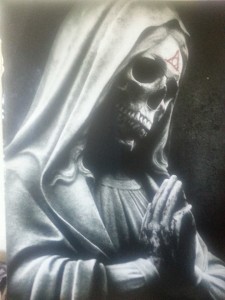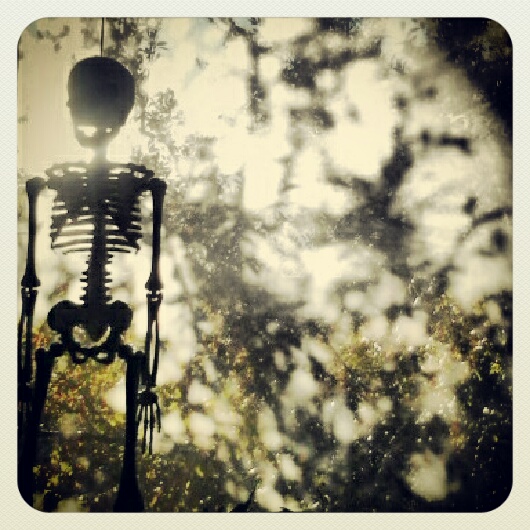Fools attempt to avoid their suffering,
The wise enact their pain.
Drink the cup of sky-nectar
While others hunger for outward appearances.
Flies eat filth, spurning the fragrance of sandalwood;
Man lost to nirvana furthers his own confusion,
Thirsting for the coarse and vulgar.
The rain water filling an ox’s hoof-print
Evaporates when the sun shines;
The imperfections of a perfect mind,
All are dissolved in perfection.
Salt sea water absorbed by clouds turns sweet;
The venom of passionate reaction
In a strong and selfless mind becomes elixir.
The unutterable is free of pain;
Non-meditation gives true pleasure.
Though we fear the dragon’s roar
Rain falls from the clouds to ripen the harvest.
– Excerpt from a translation of The Royal Song of Saraha
Recently, while reading my friend Guido Mina Di Sospiro’s review of Paolo Sorrentino’s The Great Beauty I suddenly had a deep sense of just how much we’re loosing culturally. Not so much from thinking on the movie itself, but rather from the details of Guido’s review. How many these days understand culture with the fluidity and realism that he is able to invoke? He cites Big Lebowski, which he also wrote about here on Reality Sandwich, along with the rarefied dignity of the fading aristocracy, getting to the heart of both, an uncommon gift in the crass commercial culture that predominates today.
A statement he made regarding Jep Gambardella, the main character of the movie, struck me deeply, “to the casual viewer he may seem world-weary; he is not, just disarmingly sincere. Things in general are not all that important or to be taken all that seriously, he’s come to realize, and many of them are just tricks, anyway.” Thinking on this I began to remember the words of the great mahasiddha Saraha, a Tantric teacher whose influence stretches through to today’s Dalai Lama:
Neither vibration (nada) nor point (bindu),
neither sun nor moon — the sovereign Mind
is in and of itself ever liberated.
Abandon not the straight route,
to meander down the crooked way.
Enlightenment is near,
so don’t dally in worldly life.
The bangle on your wrist, do not attempt
to see it looking in a mirror:
look to yourself – see Innate Mind direct!
Those going on either bank
are fools pursuing the way of death.
Of the channels cut on left and right,
Saraha says: O! mistake these not
for the route that is straight!
It occurred to me then to ask, does the Tantrika mourn the coming of the Kali Yuga?
Blissfully reposed on a corpse in the charnel grounds, sipping from the skull of a murdered Brahman, what care is there for kings or thieves, wanton women or virgins, for wealth or poverty or any of the other lamented signs mentioned in the Puranas? Do honest seekers really think that the movement of ages is an easy process to bear witness to?
The seductive voice of purity is no less a poison on the path than the lure of pleasure. No doubt our age is thick with dissolution, ravaged by the horrors of greed and violence. Yet, what do we expect from the congealing mass of suffering that has been predicted in every great world tradition since the beginning of human speculation? How is it possible for so many to sit in the splendor of technological advances that are predicated on the pain of an unseen slave class in desolate mines and factories,while at the same time lamenting the decadence of our age? Past ages were just as ravaged with plagues and pestilence, wars, poverty, the collapse of entire empires and civilizations. Who can point to a time when suffering has not been central to human existence?
For all those presenting solutions, or discussing the depths of esoteric traditions, who among us can step into the immediacy of the pathless path? We have so many writing today under the auspices of various ideologies, yet how many do we have that truly radiate with the potentials apparent in the great teachers? Another question is, how many of those engaged in this conversation think on the fact that up until very recently there were severe social repercussions for speaking openly about such traditions, and it is only in this decadent age that we can even entertain this conversation openly.
Scholarship has done much to bring the world’s traditions forward, but for those who seek the inner core of these traditions it is a deadly trap to become enmeshed in the detailed arguments of academics without taking great care to differentiate between what is world wise knowledge and what is wisdom itself. Thinley Norbu Rinpoche points this out very succinctly in Cascading Waterfall of Nectar, a detailed commentary on the preliminary practices of Buddhism, where he says “If one materializes each detail, there are endless details, just as there are endless conceptions, but no wisdom”
In writing recently on the outer, worldly aspects of the Kali Yuga, Traditionalist Gwendolyn Taunton quotes the Italian magus, Julius Evola from his work “What Tantrism means to ModernWestern Civilization” published in 1950:
“Tantrism may lead the way for a western elite which does not want to become the victim of these experiences whereby an entire civilization is on the verge of being submerged.”
Yet, we must be very clear what that elite truly is. It is not the outwardly resplendent godlings of yore. These are not arrogant ‘enlightened’ masters who will appear from the cemetery grounds of our rotting culture. No golden chariots await those who step out of the social order and onto the path, at least not in the physical sense. This elite will be unmoored in the world, this is an elite of castaways who exist in the hell of cause and effect that is burning around us, and are yet untouched for they have no self which can burn.
If Tantra is a saving path for this age, then we must be honest about what Tantra is and not suppose that the astute observations of a troubled soul like Evola, or other traditionalists and contemporary apologists, don’t contain some subtle flaws in their underlying assumptions. We also can’t fall into the trap of seeking some salacious thrill from the morbid and sexual imagery that marks the outer symbolism of the Tantric path. There is no fraud in this if you are truly looking to discover what is hidden in plain sight, if you seek to cheat the ferryman’s fee you’re still heading straight into the gates of death.
The traditional teacher Sri Nisargadatta Maharaj, a rough spoken cigarette seller from Mumbai, gave voice to what this elite truly is and it is not a palatable answer to most imagining themselves into some position of a spiritual aristocracy outside the pain of the Kali Yuga:
“Self-love is the motivating factor in the case of the ignorant while in the case of a Jnani, in the absence of self love, Maya or the knowledge ‘I am’, there is no world. The Jnani, who knows this reality, sees the world as a useless illusion, that’s all. For a Jnani knowledge has no form, no name while the ignorant one considers himself as real. Because of your knowledge, all activities and all suffering will happen. All suffering is out of self-love, you love yourself so you do hatha yoga.”
Another teacher, Ramana Maharshi, provides a more visceral example:
“A Brahma Jnani’s eyes will be like the eyes of a dead goat.
The goat even after it dies,its eyes are not closed.A very rare thing indeed.The eyes will be still appear like looking something, steady and pointed. But the goat is dead.
However a Brahma Jnani will have such eyes, steady, not looking at anything specifically and absolutely inward looking. But he hears all, he does all work, he replies to questions!”
In India the most austere Tantric sects are in decline. Some say that their tradition stretches back to legends of a very specific criminal class, whose crime was that of killing a Brahman, the elite of the social elite in Vedic society, and whose punishment was exile to the cremation ground, often chained to a tree where they would wear animal skins and were required to use a skull cup made from the head of the social elite that they murdered. They attain enlightenment not through the confines of monasticism, or the instruction of a sublime preisthood, their enlightenment comes from being stripped of everything and being left to live or die among the corpses, demons and ghosts which populate the mytho-poetic imaginal space of the charnel grounds they practice in.
Their shrinking numbers, however, do not represent what those focused on worldly concerns think of as the death of a tradition. Such visible manifestations of practice are outward markers, reminders and place holders for what is not available in society as a whole. As these practices disappear as sectarian pursuits, they reappear in the necessity of daily life.

In writing this I look inwardly and make no pretenses to knowing what any of this means. However, all of us who are dancing in these mediated meditations would do well to look very deeply into ourselves and what we are presenting as the truth of the path. As the wheel spins and we’re greeted each day with new images of horror and social strife, it will only be a true realization that provides any lasting solace or security. Counterfeit coins aren’t accepted when you’re trying to buy your way into a true state of enlightenment.
–
Special thanks to Jennifer Lopez for the image of La Santisima Muerte















